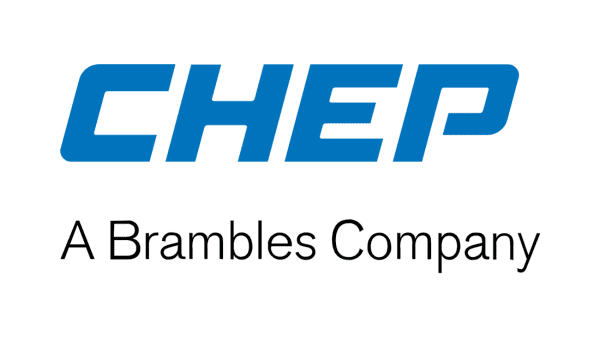ATLANTA–(BUSINESS WIRE)–Brambles, CHEP’s BB #:160353 parent company, announced its commitment to achieving net-zero greenhouse gas (GHG) emissions by 2040.
The company’s pledge to a 1.5°C climate future was an essential driving force behind its five-year sustainability targets published in 2020.
By pledging to align with the goals of the Paris Climate Agreement, Brambles was already committed to achieving net-zero greenhouse gas (GHG) emissions by no later than 2050. With this new roadmap to net-zero emissions, the supply chain solutions company is bringing its deadline forward by 10 years.
“Global warming is one of the greatest challenges of our time and we need stronger action now. Brambles has a track record of reducing emissions through its circular business model, a range of innovative initiatives and its past achievements1. These targets are an important next step in a journey that we started years ago.”
“Adopting science-based targets and bringing the net-zero deadline forward by ten years accelerates our mission to build a regenerative supply chain,” said Juan José Freijo, Brambles’ Chief Sustainability Officer. “By delivering on our net-zero ambition and beyond, we will continue to be a sustainability global leader building the supply chains the world needs for the future.”
Brambles’ new ambitious commitments are built on a solid decarbonization roadmap, with two main milestones:
1. 2030 mid-term reduction targets recently approved by the Science Based Target Initiative (SBTi)2, which include:
– 42% reduction in absolute Scope 1 and 2 GHG emissions on 2020 levels. Scope 1 and 2 are the emissions generated from the consumption of fuels and purchased grid electricity in its own operations;
– 17% reduction in absolute Scope 3 GHG emissions on 2020 levels. This includes value chain emissions from purchased capital goods, upstream and downstream transportation and distribution, waste generated in operations and outsourced service centers, representing over 90% of Scope 3 emissions; and
2. A 2040 long-term net-zero GHG emissions target by 2040, which has been set to complement the medium-term science-based targets. The target will encompass 100% of the company’s Scope 1, 2 and relevant 3 emissions3.
A solid roadmap towards decarbonization
To manage this challenge effectively, Brambles created a dedicated decarbonization function integrated within the supply chain organization. Working with internal and external stakeholders across multifunctional initiatives, the team has created an actionable roadmap with targets to ensure this corporate, strategic vision becomes a reality across five continents and 60 countries.
“Our roadmap to net-zero emissions by 2040, collaboratively developed with all our regions and constructed firmly around approved SBTis, will provide our business with longer-term strategic direction and will help retain our leadership position in sustainability,” explained Marisa Sánchez Urrea, Brambles’ Global Supply Chain Decarbonization Director.
“We have identified the decarbonization levers at our disposal, but also the key enablers that will allow us to achieve our targets, in particular having a supportive policy environment as well as zero emissions transport technologies and infrastructure. This, together with a clear internal action plan to embed carbon considerations into our decision-making, will ensure we accelerate our transition to a net-zero emissions business model.”
Brambles will focus on three main development areas to achieve the net-zero target: operations (directly owned and subcontracted), logistics and direct procurement. Some of the key levers for these areas include:
- Maximizing the recovery and reuse of Brambles’ pallets and containers to enhance the company’s
circular model; - Using renewable electricity to power Brambles’ own and subcontracted sites;
- Optimizing plant and logistics to include reducing empty lanes and maximizing truck loads;
- Enabling the deployment of alternative fuels and zero emissions transport technologies (electric, hydrogen);
- Supporting a supplier engagement program for vendors with carbon accounting and target-setting;
- Reducing the volume of waste and diverting it from landfill; and
- Exploring carbon insetting4 opportunities, including natural and technical solutions.
For more information about Brambles’ decarbonization strategy, please click here.
About Brambles Limited (ASX:BXB)
Brambles helps move more goods to more people, in more places than any other organization on earth. Its pallets and containers form the invisible backbone of the global supply chain and the world’s biggest brands trust us to help them transport their goods more efficiently, sustainably and safely. As pioneers of the sharing economy, Brambles created one of the world’s most sustainable logistics businesses through the share and reuse of its platforms under a model known as ‘pooling’. Brambles primarily serves the fast-moving consumer goods (e.g. dry food, grocery, and health and personal care), fresh produce, beverage, retail and general manufacturing industries. The Group employs approximately 12,000 people and owns approximately 345 million pallets and containers through a network of more than 750 service centres. Brambles operates in approximately 60 countries with its largest operations in North America and Western Europe. For further information, please visit brambles.com
1 Brambles’ 2025 Climate Positive targets also included a commitment to 100% renewable electricity and carbon neutrality across its own operations by 2025, both of which were achieved in 2021, four years ahead of the target date.
2 The SBTi is a partnership between CDP, the United Nations Global Compact (UNGC), the World Resources Institute (WRI) and WWF. The SBTi leads the development of best practice target setting methodologies and tools, provides companies with independent assessment and validation of targets, and recognizes companies’ commitments to science-based targets on their website.
3 Relevant Scope 3 emissions categories include purchased goods and services, capital goods, fuel and energy-related activities, upstream transportation and distribution, waste generated in operations, business travel, employee commuting, downstream transportation and distribution, and processing of sold products.
4 Insetting is generally used to describe carbon projects that avoid, reduce or sequester emissions upstream or downstream within the company’s own value chain.
Contacts
Investors:
Raluca Chiriacescu
Vice President, Investor Relations
+44 7810 658 044
raluca.chiriacescu@brambles.com
Media:
Sarah Pellegrini
Chief Communications Officer
+61 429 819 005
sarah.pellegrini@brambles.com
Víctor Collado
Director, Corporate Communications, EMEA
+34 659 691 864
victor.collado@brambles.com



